#soil conservation
Text
In 1937, Washington began an aggressive campaign to encourage Dust Bowlers to adapt planting and plowing methods that conserved the soil. Once again farmers ran their tractors from dawn to dusk, this time to prevent barren fields from blowing. In 1938, the massive conservation crusade had reduced the amount of blowing soil to 65 percent.
Carol Chaitkin, Let's Review: English
#sustainable agriculture#desertification#soil conservation#soil science#carol chaitkin#chaitkin#let's review: english#let's review english#let's review : english#let's review :english#let's review:english#lets review: english#lets review english#lets review : english#lets review :english#2011#chaitkin 2011
0 notes
Text
Putting new road with Skidsteer
youtube
#ReefDVMs#RMSpeltz Farm#skid steer#john deere#john deere skid steer#325 g skid steer#325g john deere#tracked skidsteer#road building#skid steer road#road way making#road base#soil conservation#skid steer riding#farm road#dirt road#dirt road repair#skid steer hauling dirt#property maintenance#best skid steer#ditch digging#driveway#325 john deere skid steer#farming#Youtube
0 notes
Text
5 Easy Steps Towards Soil Conservation And How Can It Lead To A Healthier Planet
While our environmentalists keep warning us to keep taking various steps to save our planet, new challenges keep arising. Soil conservation, or saving our soil, became a major challenge in this new age. When someone talks about soil conservation, it means saving fields to grow food and saving lives for both human and animal species. Soil conservation is something that will keep our water, plants, and life alive on this planet, no soil no life!
What Is Soil Conservation?
Soil conservation is a process that combines methods and practices to keep away from debasement, disintegration, and exhaustion of the soil.
A significant goal of soil conservation is keeping up with biodiversity by occupying eco-networks that add to its ripeness in their natural manners. Split dead life forms supplements, it and further develop water invasion, and air circulation. Guaranteeing appropriate circumstances for living bodies on this earth and fundamentally significant for vegetation that develops essential microorganisms that prepare the friendly natural condition for plant needs.
5 Easy Steps For Soil Conservation
1. Use of Organic waste to Build Healthy Soil
In India, individuals have been plowing the same land for a very long time. But, in the last century, the soil quality has decreased so much that it is nearly turning into a desert. One easy way to save it is to keep organic waste or products like as old trees, animal dirt, and other organic waste, that decompose easily into soil.
Without decomposable waste, it is impossible to keep the soil rich. When we developed crops in ancient times, we simply took the harvest, and the remainder of the plant waste was consistently returned to the dirt. We appear to have lost that insight.
2. Tree-based Agriculture or Agroforestry
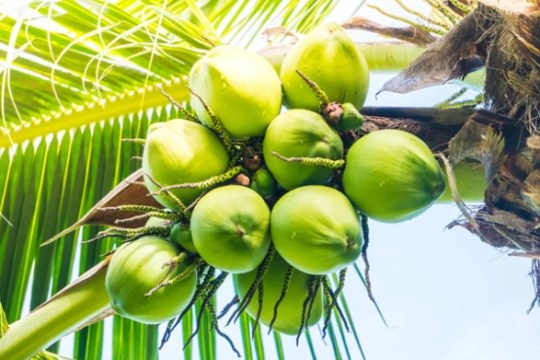
We can’t make another rainforest since that requires centuries of work. Be that as it may, we can make tree fields, and this can’t occur except if we move into tree-based farming.
Agroforestry is a type of land management in which trees, as well as shrubs, are developed around many crops or pastureland. This process helps in locking the soil and keeping it safe.
3. Plant belts along water banks
Plant strips help to keep stream banks intact during flooding seasons. They also prevent overflow from entering streams. Support tree belts can be made up of a variety of grasses, bushes, and trees. It prevents soil erosion and keeps it in place.
4. Reestablish Wetlands
Wetlands are one of the most effective methods of preventing soil disintegration. Wetlands work like regular wipes, engrossing water and keeping it from diverting dirt. They likewise give favourable territory to birds and other water creatures, preventing water contamination.

Terrace cultivating imitates the impacts of porch cultivating, yet on a more limited size. As opposed to establishing crops in straight vertical lines, crops need to be grown following a sloping path. Crops spread all over slopes make pathways for water to stream. Crops lined up with the land slow down the progression of water that forestalls soil erosion.
Advantages Of Soil Conservation
Humanity overall gains several benefits from soil protection. The practices listed above contribute to soil conservation in a variety of ways.
It helps air and water filtration. The significance of soil protection connects with water supplies and the earth’s capabilities as a characteristic channel to filter water.
Soil conservation can bring drastic changes, as the positive outcomes are not just limited to agriculture productivity but also help keep our planet in balance by keeping trees and water intact at their appropriate places.
What Can A Layman Do To Prevent Soil Erosion?
What can you do to prevent soil erosion if you have no direct involvement with farming or soil conservation? Not much, but sufficient. You are welcome to spread the word. As a layperson, you can spread this information to as many people as possible and raise awareness about it.
Choosing to endorse agroecological farming, such as organic, in your community means voting for a method that is based on naturally nourishing crops by building soil fertility.
The primary principle of sustainable farming is soil health. We can make positive action toward soil conservation by empowering farmers to transform into organic agriculture.
0 notes
Text
"Many people know about the Yellowstone wolf miracle. After wolves were reintroduced to the national park in the mid-1990s, streamside bushes that had been grazed to stubble by out-of-control elk populations started bouncing back. Streambank erosion decreased. Creatures such as songbirds that favor greenery along creeks returned. Nearby aspens flourished.
While there is debate about how much of this stemmed from the wolves shrinking the elk population and how much was a subtle shift in elk behavior, the overall change was dramatic. People were captivated by the idea that a single charismatic predator’s return could ripple through an entire ecosystem. The result was trumpeted in publications such as National Geographic.
But have you heard about the sea otters and the salt marshes? Probably not.
It turns out these sleek coastal mammals, hunted nearly to extinction for their plush pelts, can play a wolf-like role in rapidly disappearing salt marshes, according to new research. The findings highlight the transformative power of a top predator, and the potential ecosystem benefits from their return.
“It begs the question: In how many other ecosystems worldwide could the reintroduction of a former top predator yield similar benefits?” said Brian Silliman, a Duke University ecologist involved in the research.
The work focused on Elk Slough, a tidal estuary at the edge of California’s Monterey Bay. The salt marsh lining the slough’s banks has been shrinking for decades. Between 1956 and 2003, the area lost 50% of its salt marshes.
Such tidal marshes are critical to keeping shorelines from eroding into the sea, and they are in decline around the world. The damage is often blamed on a combination of human’s altering coastal water flows, rising seas and nutrient pollution that weakens the roots of marsh plants.
But in Elk Slough, a return of sea otters hinted that their earlier disappearance might have been a factor as well. As many as 300,000 sea otters once swam in the coastal waters of western North America, from Baja California north to the Aleutian Islands. But a fur trade begun by Europeans in the 1700s nearly wiped out the animals, reducing their numbers to just a few thousand by the early 1900s. Southern sea otters, which lived on the California coast, were thought to be extinct until a handful were found in the early 1900s.
In the late 1900s, conservation organizations and government agencies embarked on an effort to revive the southern sea otters, which remain protected under the Endangered Species Act. In Monterey Bay, the Monterey Bay Aquarium selected Elk Slough as a prime place to release orphaned young sea otters taken in by the aquarium.
As the otter numbers grew, the dynamics within the salt marsh changed. Between 2008 and 2018, erosion of tidal creeks in the estuary fell by around 70% as otter numbers recovered from just 11 animals to nearly 120 following a population crash tied to an intense El Niño climate cycle.
While suggestive, those results are hardly bulletproof evidence of a link between otters and erosion. Nor does it explain how that might work.
To get a more detailed picture, the researchers visited 5 small tidal creeks feeding into the main slough. At each one, they enclosed some of the marsh with fencing to keep out otters, while other spots were left open. Over three years, they monitored the diverging fates of the different patches.
The results showed that otter presence made a dramatic difference in the condition of the marsh. They also helped illuminate why this was happening. It comes down to the otters’ appetite for small burrowing crabs that live in the marsh.
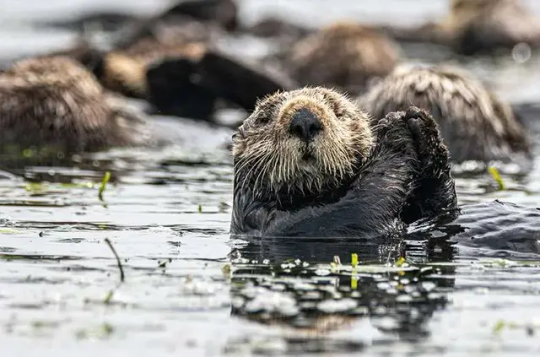
Adult otters need to eat around 25% of their body weight every day to endure the cold Pacific Ocean waters, the equivalent of 20 to 25 pounds. And crabs are one of their favorite meals. After three years, crab densities were 68% higher in fenced areas beyond the reach of otters. The number of crab burrows was also higher. At the same time, marsh grasses inside the fences fared worse, with 48% less mass of leaves and stems and 15% less root mass, a critical feature for capturing sediment that could otherwise wash away, the scientists reported in late January in Nature.
The results point to the crabs as a culprit in the decline of the marshes, as they excavate their holes and feed on the plant roots. It also shows the returning otters’ potential as a marsh savior, even in the face of rising sea levels and continued pollution. In tidal creeks with high numbers of otters, creek erosion was just 5 centimeters per year, 69% lower than in creeks with fewer otters and a far cry from earlier erosion of as much as 30 centimeters per year.
“The return of the sea otters didn’t reverse the losses, but it did slow them to a point that these systems could restabilize despite all the other pressures they are subject to,” said Brent Hughes, a biology professor at Sonoma State University and former postdoctoral researcher in Silliman’s Duke lab.
The findings raise the question of whether other coastal ecosystems might benefit from a return of top predators. The scientists note that a number of these places were once filled with such toothy creatures as bears, crocodiles, sharks, wolves, lions and dolphins. Sea otters are still largely absent along much of the West Coast.
As people wrestle to hold back the seas and revive their ailing coasts, a predator revival could offer relatively cheap and effective assistance. “It would cost millions of dollars for humans to rebuild these creek banks and restore these marshes,” Silliman said of Elk Slough. “The sea otters are stabilizing them for free in exchange for an all-you-can-eat crab feast.”"
-via Anthropocene Magazine, February 7, 2024
#otters#sea otters#conservation#erosion#coastal erosion#coastline#marshes#saltwater#marine science#marine biology#marine animals#sea creatures#ocean#sustainability#soil erosion#erosion control#crab#good news#hope
3K notes
·
View notes
Text
Can I fire my therapist yet
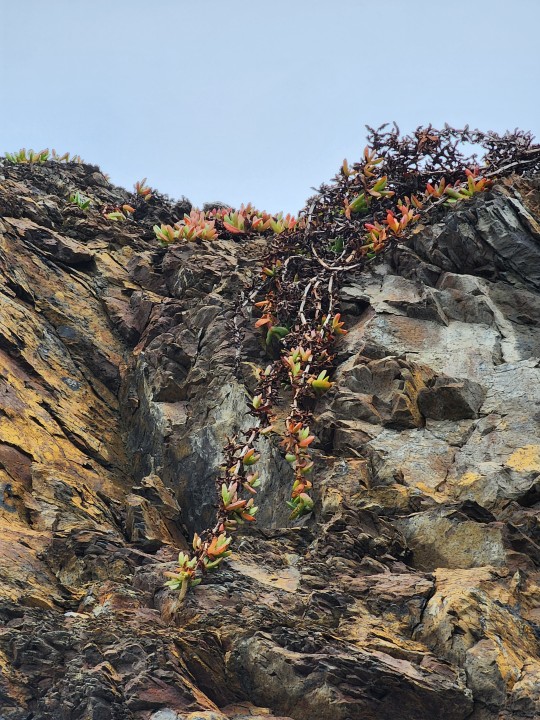
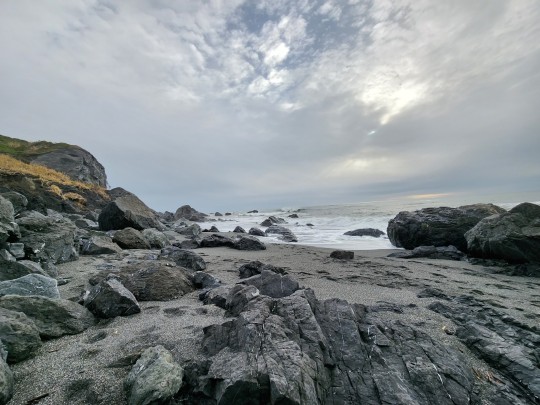
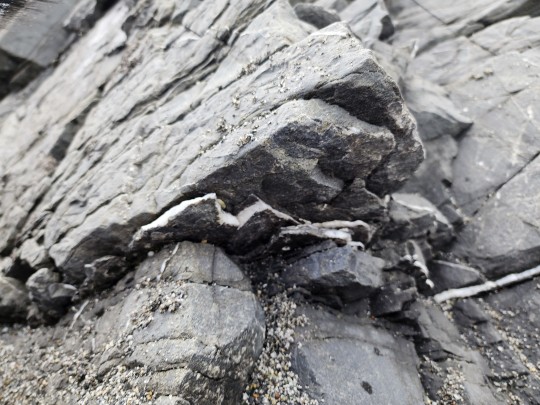
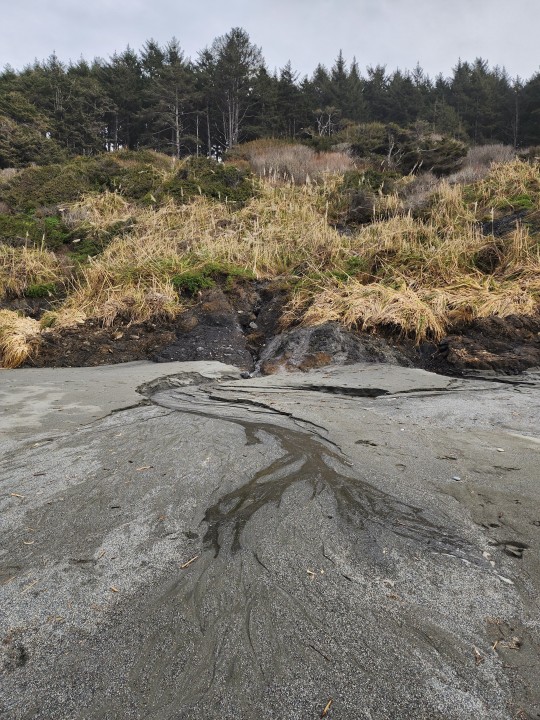
0 notes
Photo

Mulching involves covering the ground with a layer of material, such as straw, bark, or leaves. This helps to protect the soil from the effects of rainfall and other forms of precipitation. Full length mulching is a more intensive form of mulching, in which the entire field is covered with a layer of material. This can be done using either natural materials, or synthetic materials such as plastic sheeting. #Soilerosion #Soilconservation #Soil #Mulching#Videos #Library
0 notes
Photo
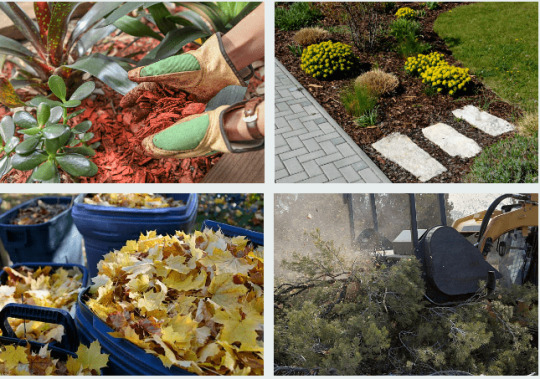
Soil erosion is a major problem in many parts of the world. It can cause serious damage to crops and property, and can even lead to loss of life. Mulching is one way to help prevent soil erosion. Full length mulching has many benefits. It can help to reduce soil erosion by protecting the soil from the impact of rainfall. It can also help to improve water infiltration into the soil, and increase moisture retention. This can be beneficial in areas where drought is a problem. Full length mulching can also help to control weeds, and improve the appearance of fields. #Mulching #Soil #SoilConservation #Soil #SkyVideos
0 notes
Photo
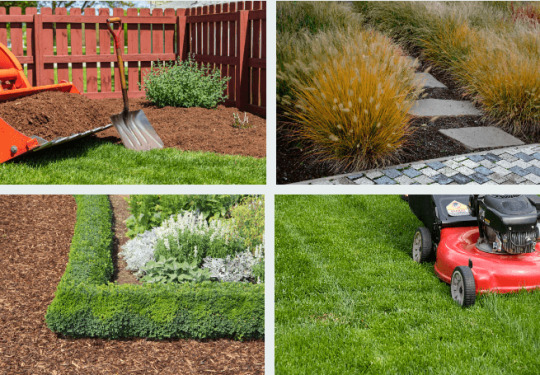
Mulch is a great technique for maintaining soil health, controlling weeds, and protecting plants from frost. Mulching can also help retain moisture in the soil and suppress weed growth. There are many benefits to using mulch, and it’s a great way to maintain your garden’s appearance and function. Mulching can help conserve moisture in the soil. By keeping the surface of the soil covered with organic matter, water can’t evaporate as quickly. This helps keep soils moist and healthy in dry climates, and it also helps to prevent weed growth. Watch video https://www.youtube.com/watch?v=wfnQ2sPzvEw
0 notes
Text
Access to clean water in arid and semi-arid contexts results in more diversified food.
WFP work on sustainable livelihoods and ecosystems helps countries and the most vulnerable and food insecure communities manage natural resources sustainably such as soil conservation and fertility measures; water harvesting and flood control; agro-ecological productivity to reduce biodiversity loss; irrigation schemes; forestry and agroforestry management; and, access to clean water in arid and semi-arid contexts results in more diversified food, thereby complementing nutrition efforts. The restoration of degraded ecosystems boosts public health and reduces hardship in general.
#food insecure#soil conservation#soil fertility#agro-ecological productivity#water harvesting#world food program (wfp)
0 notes
Text
Hey Tumblr, weird place to put this. But I'm nervous. I'm going to apply for the Forester position that just opened. This is my cover letter (parts of it are cropped or scribbled out because the Internet doesn't need to know my address, name, or phone number, ha).
But, uh? Does this seem like a good letter or no? I've actually never had to write a cover letter for a job before.


#i have a shot at working a relatively normal job with normal hours and not killing myself working 12hr + days#north dakota#eyes talks#resume#cover letter#Forestery#USDA#nrcs#soil conservation#conservation practices#job advice
0 notes
Text
Extreme Policies for Organic Farming Ignore Soil Science: Former USDA Soil Scientist
Extreme Policies for Organic Farming Ignore Soil Science: Former USDA Soil Scientist
Under pressure from environmentalists, some governments have implemented extreme nitrogen fertilizer restrictions that ignore the time needed to restore a depleted soil microbiology, resulting in protests from some scientists and farmers who are seeing the concerning impacts of such restrictions.
According to organic farming proponent and former U.S. Department of Agriculture (USDA) soil…

View On WordPress
#centralization#Featured#Microbes#nitrogen#Organic Farming#soil conservation#soil microbiology#synthetic fertilizer#THE EPOCH TIMES
0 notes
Text
I absolutely LOVE my job working for a Soil Conservation. (Eyy, my 9th year this year 👌)
But HOT DAMN, sometimes I wonder what I'm doing with my life.
Had a normal day. Kind of a solo day. I took out one of the coworkers and we knocked out a job site replacing trees in a shelter belt. We clocked out around 5pm.
I get a call around 6pm from my boss, saying to be on call because she'll need a ride back from a grass seeding site on the opposite end of the county later. No big deal. I took the work truck home anyway because, well it was easier than having my coworker drive me home to the town over from the office. (my truck is still parked, broke down in my yard.)
Well, I get a call around 8:30. Boss asked if I could run to the shed, load the rest of the seed then go out to the field to meet her. Okay. No big deal there. I get to the office, clock back in at around 9pm.
Fast forward several hours.

I DIDN'T CLOCK OUT TILL 4:10AM WHEN WE FINALLY GOT BACK TO THE OFFICE....
The "be on call to come pick me up" turned to a frantic "we need to get this CRP planted NOW. Radio said there's 3 inches of rain coming!" Literally. As we were pulling out of the field, after finishing up that 30 acres, those rain drops started falling...
Cut that fucker close.
I'm dead.
I need to be up in 4 hours to hold horses for my farrier. Fuck. It's going to be a long day.
But hey, pony gets to try on his new halter tomorrow ❤️
I work these stupid hours for you my boy. I hope you know that.
#eyes talks#my life#soil conservation#nrcs#i love my work#never a dull day#our one work truck has a mystery dent in it too#well#more like a HOLE#the size of my fist#both boss and i are confused#there's only one set of keys#or so i thought until boss brought it up that tonight that there is a second set but they disappeared 10 years ago#so#we think who ever has those keys that disappeared a DECADE ago may have joy road the truck#its the only thing we can think of#how does a literal hole appear on a truck that only one person has keys too suddenly appear when that truck was parked in the shed#other than who ever has the lost spare set of keys and who knows how to get into a government building and knows what the keys go to#its strange
1 note
·
View note
Text
Beginning of new life 🍀🍀🍀



Apple 🍎 tree nursery ...
In 2022 , we planted apple nursery
From the start to till now we learn so many things, and try to maintain nursery bed properly.
The main advantage of our own nursery is that,after 1 or 2 year when these plants are properly grown up,Then we can graft them and use them in our orchard. We don' t need to export plant from outside.
Also we know the whole process from the beginning, How one plant grow from seed and become very big.
#plant#plants#orcharist#orchard#royal apple#life#fresh#beautiful#mountains#apple tree#fruitberries#big mountain#peacewithin#nature#apple nursery#nursery#small plants#land#soilhealth#soil conservation#soilmicrobes
1 note
·
View note
Photo

#soil#fertilizers#gardens#gardening#homes#home and garden#ecology#environment#conservation#pesticides#herbicides#nature#outdoors
286 notes
·
View notes
Text
Atmospheric Rivers and Drought: It’s More Complicated Than You Think
In recent weeks, the West Coast has been hit with multiple atmospheric rivers and bomb cyclones, causing massive storms, torrential rain, and the floods and landslides that often result. This includes areas of California that have been hit incredibly hard by drought over the past several years.
I’ve seen a lot of people elated that the snowpack on California’s mountains has been increasing at record speeds. And reservoirs are the highest they’ve been in years. These are certainly excellent silver linings amid the tragedy and loss of life brought by flooding, and in the short term they’ll bring some much-needed relief. Unfortunately, they aren’t going to bring California–and the rest of the West–out of the current drought.

You may have learned in school that the basic water cycle consists of evaporation, condensation, and precipitation. Which is all true, of course. But there’s a lot more to hydrology than that.
Hydrology can be defined as how water is captured, held, and safely released by the land. For instance, here in the Pacific Northwest (west of the Cascades, anyway) we’re accustomed to a long rainy season that starts in fall, goes all the way through winter, and in some years persists almost to summer. There are plenty of rainy days–not the heavy downpours we’ve been seeing, but a mix of steady rain, drizzles, and mists.
Once the rain hits the ground, the soil soaks it up like a sponge. Soil is made of a mix of eroded bedrock and decayed/decaying organic matter; the more organic matter in the soil, and the thicker the soil, the more water it can hold. Some of the water trickles through the soil to be released into streams and rivers above ground. The inherent sponginess of our soil slows the water down enough that some of it also sifts down into groundwater stores.
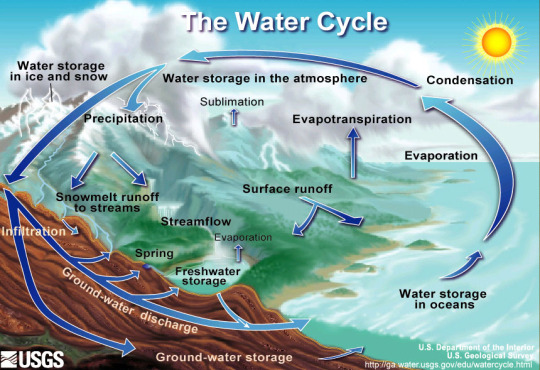
It’s the same thing in drier areas, too. Arid zones like the Northwest east of the Cascades, or large portions of central and southern California, don’t typically receive as much precipitation, and the soil doesn’t have as much absorbency. But the basic hydrological cycle is the same, and in a normal rain year groundwater reserves are replenished along with the snowpack and reservoirs.
The problem is that the atmospheric rivers and other massive storms that have been hitting the West Coast more frequently in recent years are too much for our natural hydrological system to handle. It’s like the difference between watering a garden with a sprinkling can versus a high-powered nozzle at full blast. Too much water falls at once; the soil becomes saturated more quickly, at which point it can no longer absorb any more rain.
Because more water is falling in a shorter period of time, the excess rain flows off the surface of the ground, no longer slowed by soil. This leads to increased flooding, and the super-saturated soil is more likely to create massive landslides. Although the reservoirs are able to capture some of the rain, there’s a lot that’s simply escaping downstream.
The soil is still sending some water down into the groundwater system. But the precipitation is concentrated into smaller periods of time during violent storms instead of stretched out over weeks of intermittent to steady rain. That means that by the time the soil has offloaded its excess water, the storm has passed and another dry period begins. Ultimately less precipitation is making it down through the soil into groundwater stores.

One storm won’t refill groundwater, either; often these aquifers and basins take years or even decades to fully recharge. Keep in mind that groundwater across western half of the United States has been used at a much higher rate than it replenishes for many decades due to the demand for water for agriculture, industry, and a rapidly growing population. These demands aren’t going away, either; they’ll continue sucking down water until everything runs dry.
And the larger snowpacks? Unfortunately, the hotter summers mean that they will still be melting faster than normal. The extra depth means that we’ve got more padding than we did a year ago, but it isn’t going to fix everything; it just buys us a little more time.
Both the drought and atmospheric rivers are symptoms of a larger problem: climate change. The higher average global temperatures are wreaking havoc on weather patterns, causing greater and more frequent extremes.
A lot of this is because warmer air can hold more humidity, which has a direct effect on how much precipitation is dropped by storms. The warming of both the atmosphere and the oceans leads directly to more powerful storms. Conversely, because precipitation events are concentrated into shorter periods of time, coupled with higher temperatures overall, we’re seeing longer and more extreme droughts worldwide.
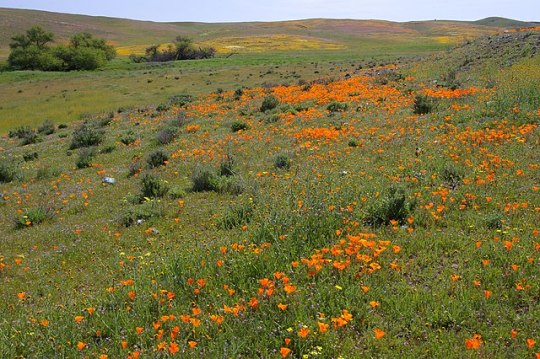
All of this doesn’t mean you can’t be happy about the immediate relief given by higher reservoir levels and snowpack increases. After all, I’m pretty happy about the fact that some lives will certainly be saved because of it. This is legitimately a good turn of events, even if it came out of something awful. And who knows? Maybe there will be other little silver linings along the way; after all, rain sometimes brings super blooms of wildflowers.
My suggested takeaway from this article is: be balanced in your approach to climate news. Yes, we need to stay as motivated and engaged as we realistically can in the fight for a better climate future, and not let the momentary successes lull us into thinking the battle is over. But it’s really important for us to celebrate the wins we do get. Allowing ourselves to focus on good news can help increase emotional resilience and provide a much-needed break from doom and gloom headlines. In short: you aren’t ignoring the problems if you give yourself some time to think about something else, and in fact changing your mental channel for a while is a crucial act of self-care.
And then, when you feel ready to engage again, just remember that not all is lost, and there’s still plenty left to keep fighting for.
Did you enjoy this post? Consider taking one of my online foraging and natural history classes or hiring me for a guided nature tour, checking out my other articles, or picking up a paperback or ebook I’ve written! You can even buy me a coffee here!
#long post#flooding#climate change#drought#California#anthropogenic climate change#environment#environmentalism#conservation#weather#climate#rain#water#soil#hydrology#science#nature#scicomm#science communication
141 notes
·
View notes